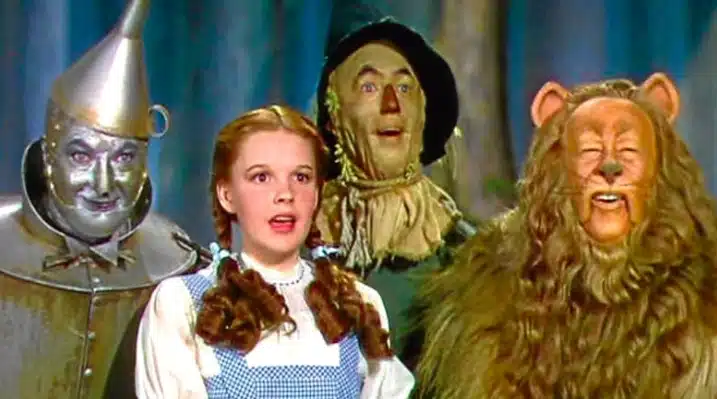The Moral Dilemmas of a Lion, a Scarecrow, and a Tin Man
Frank Baum’s original introduction to The Wizard of Oz, written in 1900, made it clear that he felt children no longer needed the stereotypical “old-time fairy tale” that “may now be classed as ‘historical’ in the children’s library.” Baum claimed the time had come for “newer ‘wonder tales’ in which…the wonderment and joy are retained and the heartaches and nightmares are left out.” Still traumatized by watching the movie version as a child, I wanted to shout, “Flying monkeys!!”
In spite of Baum’s promise to throw out the bad and keep the good, he needed those scary flying monkeys and evil witches in order to deliver the promised wonderment and joy. The moral dilemmas in this story survived the transition into the movie version intact, even if Hollywood changed Dorothy’s silver slippers into ruby slippers and reinvented the good witch from a “face…covered with wrinkles, her hair…nearly white…[who]…walked rather stiffly” into glamorous Glinda, the Good Witch of the North.
Note that this hundred-year-old story has been farmed for leadership lessons for decades, including a self-published book on leadership lessons according to Toto, Dorothy’s dog. That’s because the The Wizard of Oz is a multi-moral story that illustrates paradoxical truths such as learning to appreciate home by leaving home, that what you seek externally is already inside, that courage doesn’t exist without fear, and risking self to save others can restore ones sense of self.
We seem equipped with emotions specifically designed to override extreme self-interest in favor of love and connections. If there is an evolutionary reason that humans living isolated lives suffer loneliness, then stories celebrate a wide range of feel-good solutions. Most offer blueprints that show how reaching out with love, making connections, and acts of generosity can be much more rewarding than winning as much as we can, as often as we can. The best stories teach us how to balance dueling desires for paradoxical goals like love and power rather than risk the danger of choosing only one over the other (a paradox that spreadsheets don’t reflect).
We learn how to determine whether it is time to connect or disconnect, to be firm or flexible, to tend relationships or go it alone, to use or set aside emotions, to reference past, present, or future, to exert control or invite participation. It takes the virtual reality of plots and characters to successfully toggle back and forth between technically contradictory yet complementary approaches. We find meaning not in choosing one over the other, but in embracing the paradox that we thrive by giving and receiving, by following and leading, by creating rules with exceptions that tend to relationships, and by both revealing and hiding our vulnerabilities.
Excerpt from Chapter 12, 3rd ed. of The Story Factor (2019) AUDIBLE VERSION HERE


